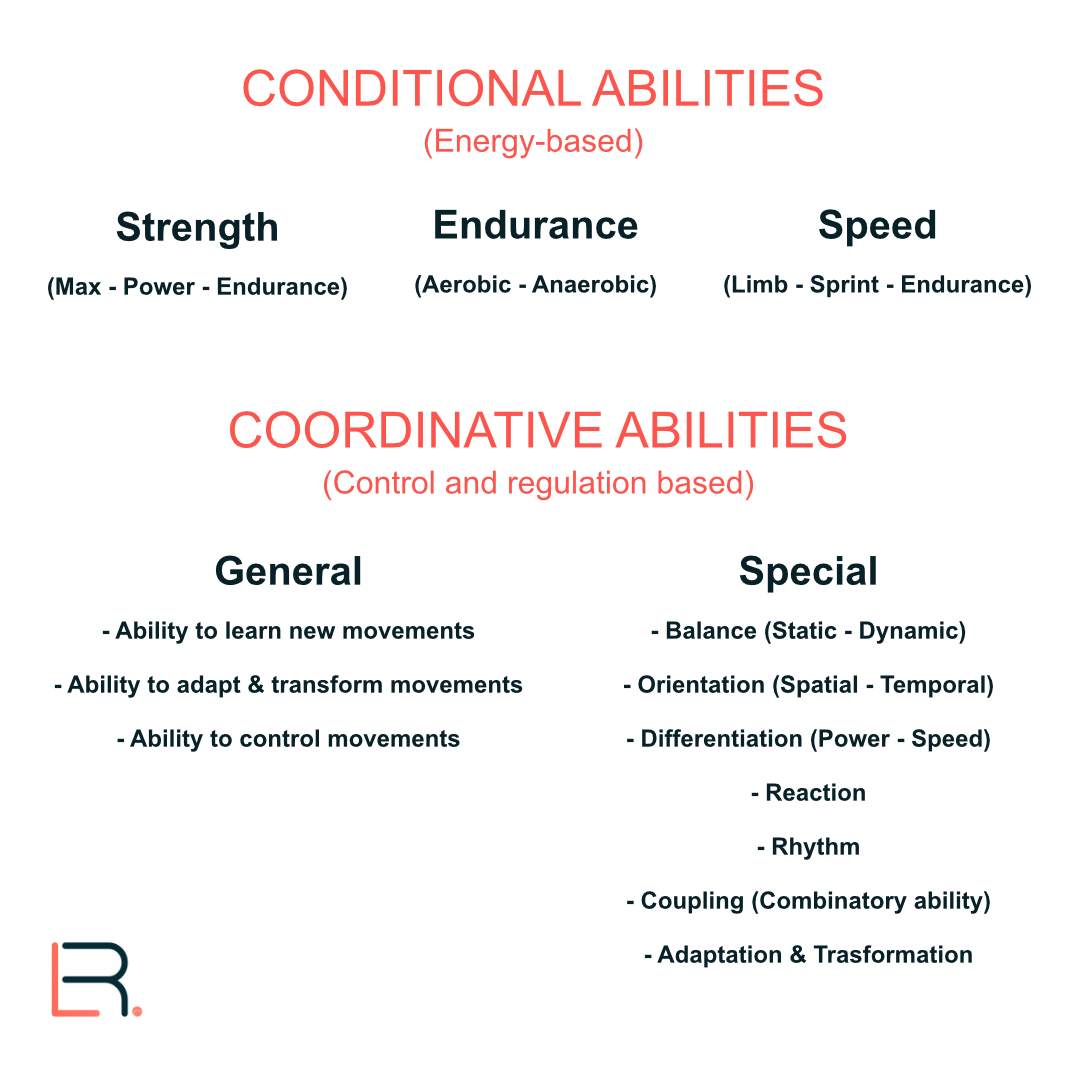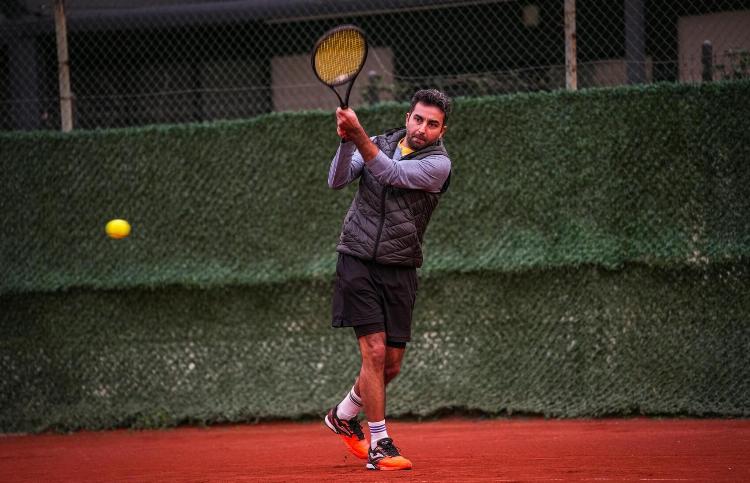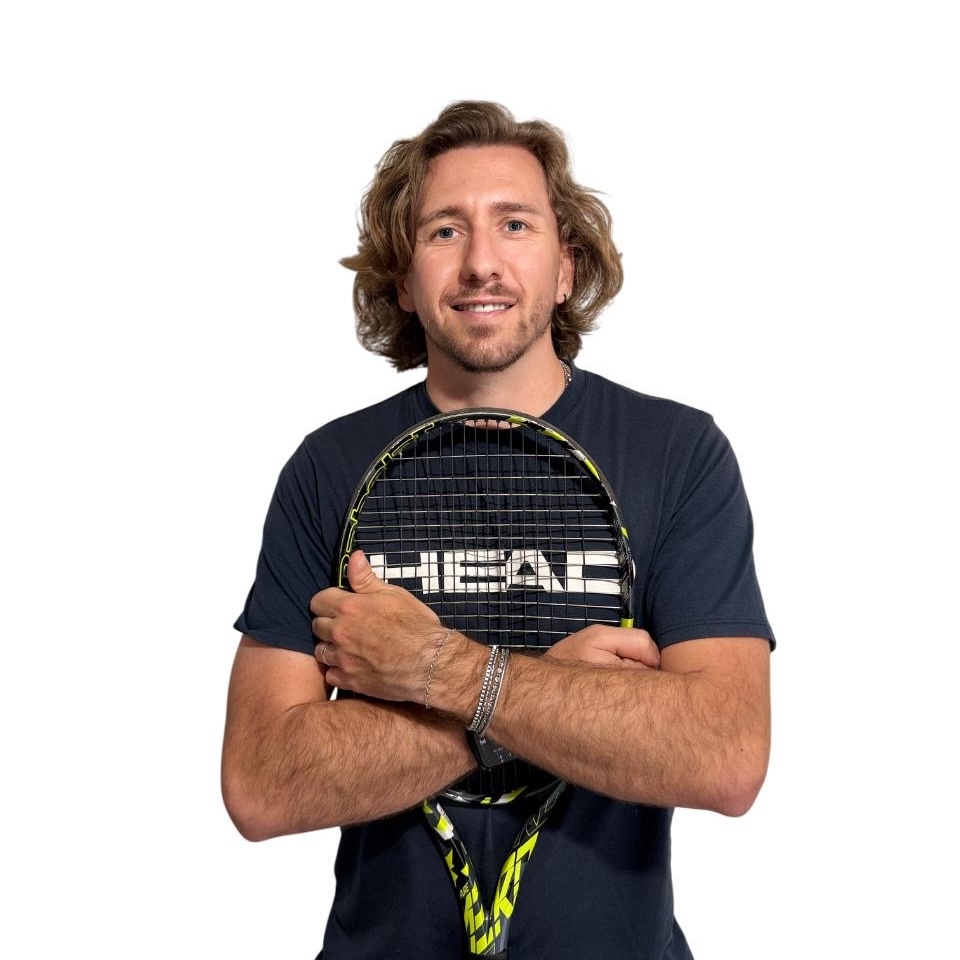Adult Tennis: Mastering Tennis Later in Life
Saturday, 7 a.m. It has been a long week. I slightly move the curtains to check the weather as usual. It's windy. Again.
My first lesson is at 10 a.m. As usual, I get to the academy early, and my students are already on court—fully warmed up and ready for the greatest fight of their lives. I think it was Rafa Nadal who said competitions shouldn't be played when the wind reaches a certain speed. Well, this should apply to classes too.
We're in what feels like the middle of a tornado. Balls fly everywhere, my eyes fill with clay, and hitting a proper shot comes down more to chance than ability. We wrap up the session, and I realise something profound: only adult players are capable of surviving sessions like this.
Meet Sarah, a 42-year-old broadcaster who started her adult tennis journey just two years ago. While teenagers might have cancelled today's lesson without a second thought, Sarah grins through the chaos, adjusting her grip and calling out, "One more rally!" This determination isn't unique to Sarah—it's the defining characteristic I've witnessed in countless adult players throughout my coaching career.
Adult players are the most passionate, relentless, and determined among all categories. I know many juniors who would have stayed home without feeling any guilt. But adults? They show up. They push through, transforming challenges into opportunities.
So in this issue, we'll explore two crucial questions that every aspiring adult player asks:
Is it possible to learn tennis as an adult?
And most importantly, is it possible to become genuinely good players?
The Science Behind Learning: Why Your Brain Never Stops Growing
Movement, in its broader meaning, is a learning experience. By both moving and interacting, we learn new things and shape our view of the world. While motor abilities have sensitive ages when learning comes easier, and this varies from one ability to another, there's a crucial truth many adults don't realise: science reveals that learning isn't just possible after these "golden ages"—it can be remarkably effective.
The research is clear: there's no evidence that adults cannot learn new abilities after a certain age. In other words, learning is not just possible, but it can be profound and lasting. Adults stepping onto a court at 35, 45, or 55 aren’t wasting time or money. They're investing in learning capabilities their brain is perfectly equipped to develop.
The Adult Challenge: What Makes Learning Different
Consider David, a 50-year-old engineer who approached tennis like he approaches complex projects at work. While his teenage practice partner relied purely on natural reflexes, David analysed each shot, understood the physics of spin, and developed strategies that consistently outmanoeuvred raw athletic ability. This analytical approach could represent just one of the hidden advantages adult learners bring to tennis.
However, the path to tennis excellence does present some unique challenges for adult learners. Understanding these obstacles is crucial for both players and coaches committed to how to coach tennis adults effectively:
Established Motor Habits: Years of daily life movement patterns, often developed sub-optimally, can create initial resistance to learning new techniques. That morning coffee reach or computer mouse movement has trained your arm in ways that might conflict with a proper forehand swing.
Psychological Complexities: Adult minds come loaded with expectations, self-consciousness, and lower frustration tolerance. Unlike children who simply play, adults often judge every shot, creating mental barriers that can interfere with natural skill acquisition.
Physical Considerations: Recovery takes longer, and injury prevention becomes paramount. The weekend warrior mentality can clash with the steady, progressive approach that yields the best results.
Time Constraints: Between career demands and family responsibilities, finding consistent practice time requires strategic planning that teenagers rarely face.
A Scientific Approach to Adult Learning
When Tom, a 45-year-old lawyer, told me he wanted to play tennis with his teenage daughter who was already competing at state level, I knew we needed a completely different approach than traditional junior coaching. How to coach tennis adults requires understanding that adult learners require a different approach.
Step 1: The Foundation Assessment
Every tennis journey begins with assessments. Usually, adults have deeply rooted motor habits, so I recommend checking motor preferences, balance, spatial and depth perception. It sounds highly scientific, but it actually takes about 15 minutes and reveals both potential and liabilities.
Take Jennifer, a former dancer who struggled with conventional tennis instruction until we discovered her exceptional body awareness and rhythm. Suddenly, tennis motor skills that seemed impossible became natural extensions of abilities she already possessed. This assessment allows coaches to predict which patterns will click easily—perhaps forehand over backhand—and identify court areas where extra attention will pay dividends.
Below a list of abilities to test in your assessments. They can be used as leverage to learn new abilities.

Step 2: Mining Your Athletic History
Every sport you've ever played, every physical activity you've enjoyed—it all contains transferable value for tennis. The key is knowing how to unlock it.
Soccer players often arrive with exceptional dynamic vision and explosive agility that translates beautifully to court coverage, but they typically need focused work on upper-body rotation. Dancers often possess remarkable body control and can execute complex movement combinations, though they may need help adapting to a fast-moving ball's unpredictable trajectories.
Science based coaching leverages these existing strengths rather than starting from scratch, creating faster progress and more confidence in the learning process.
Step 3: Strategic Skill Selection
Here's where adult tennis coaching becomes an art form. Unlike junior programs that can work on multiple skills simultaneously, adult learners thrive when focusing intensively on one or two critical areas.
In my experience, rhythm represents the most common deficit among new adult players, often because they haven't maintained regular athletic activity. But once we identify and address this foundational element, every other skill builds more naturally and rapidly.
Beyond the Court: Creating Your Tennis Ecosystem
The most successful adult tennis transformations happen when learning extends beyond lesson time. Since established movement patterns resist change, creating supportive routines becomes essential.
Mark, a busy executive, transformed his tennis game by incorporating simple coordination exercises into his morning routine. Five minutes of ball bouncing while watching the news, shadow swings during conference calls, and wall practice sessions during lunch breaks created the repetition volume that court time alone couldn't provide.
For gym enthusiasts, personalised fitness programs targeting tennis-specific areas create compound benefits: improved performance and enhanced overall wellness. The key lies in making these additions feel natural rather than burdensome.
The Adult Learner's Mind: Coaching the Whole Person
How to coach tennis adults successfully requires understanding that adult minds crave context and reasoning. Unlike children who accept "do this because I said so," adults need to understand the why behind every technique and drill.
A good coaching philosophy for adults should center on:
Communicate the Logic: Explain not just what to do, but why it works. Adult learners often process and internalise information more effectively when they understand the reasoning behind each instruction.
Set Achievable Milestones: One shot at a time, one ability at a time. Adults thrive on measurable progress and appreciate building broader comfort zones through consistent routine rather than constant novelty.
Embrace the Journey: Pattern automation while braking old habits often requires significantly more repetitions for adults compared to learning as a junior. Patience becomes a virtue that pays compound dividends.
Honor Individual Learning Styles: Some adults approach tennis analytically, others prefer kinaesthetic exploration. Successful coaching adapts the method while maintaining consistent goals.
The Breakthrough Question: Can Adults Become Genuinely Good Players?
Absolutely, unequivocally yes.
Success depends primarily on training consistency rather than starting age. Former athletes transitioning to tennis naturally have advantages, but I've witnessed remarkable transformations among complete athletic beginners as well.
Consider Patricia, who picked up her first racquet at 40 after her doctor recommended low-impact exercise. Five years later, she's competing in regional tournaments and considering ITF senior events. Her journey illustrates that while the learning curve might not look like a teenager's, the destination can be equally impressive.
The key lies in leveraging individual strengths and use them to develop a more well-rounded tennis. When these mental assets combine with proper science based coaching and consistent practice, the results often exceed everyone's expectations, including the player's.

Your Tennis Story Starts Now
Tennis offers adults something uniquely valuable: a sport that keeps both body and brain engaged, challenged, and growing. For parents whose children play tennis, learning the sport creates shared experiences and bonding opportunities that can last decades.
The winning approach leverages abilities you already possess while gradually expanding your range one pattern at a time. In my experience, designing exercises that retrieve and adapt abilities from your past creates not just technical improvement, but meaningful connections that extend far beyond any tennis program.
Your tennis journey as an adult isn't about comparing yourself to players who started at six years old. It's about discovering capabilities you didn't know you had, building confidence that carries into every area of life, and joining a community of passionate learners who prove that the best chapters often begin later than we expect.
What will your tennis story look like?
The court is waiting, and your potential is calling.
Can you recall the best session you've had as an adult player or coaching adults?
Want to explore more in-depth tennis topics related to player development? Drop a message on social media or reach out at hello@riccardoleone.org
